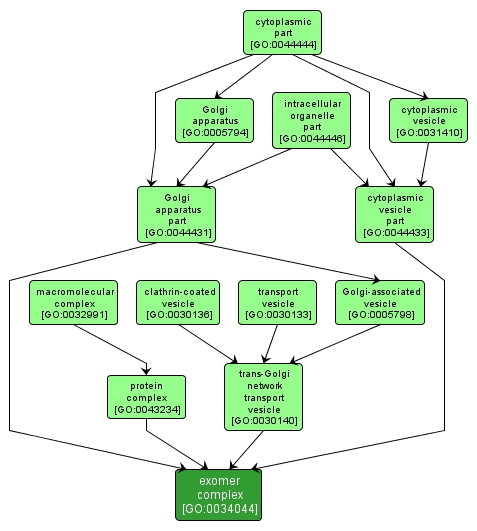GO TERM SUMMARY
|
| Name: |
exomer complex |
| Acc: |
GO:0034044 |
| Aspect: |
Cellular Component |
| Desc: |
A protein complex that forms a coat structure on vesicles involved in exocytosis of proteins from the trans-Golgi network to the cell surface; in Saccharomyces, the complex contains Chs5p, Chs6p, and Chs6p paralogues. |
|

|
INTERACTIVE GO GRAPH
|














